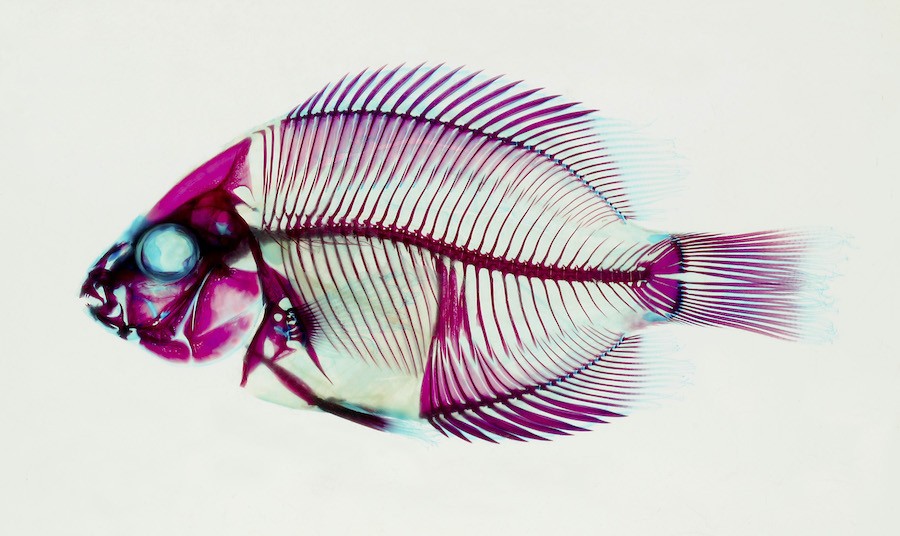Blink and You’ll Miss It: The Secrets of Light in "Picturing Science" Exhibit
Todays News
SRQ DAILY FRIDAY WEEKEND EDITION
FRIDAY MAR 11, 2022 |
BY DYLAN.CAMPBELL. DYLAN@SRQME.COM
Pictured: Madascar cichlid by John S. Sparks, Associate Curator, Division of Vertebrate Zoology American Museum of Natural History.
Blink and you’ll miss it. At least, that used to be the case when studying microorganisms and ancient artifacts. That is, until the Bishop Museum of Science and Nature welcomed in their newest special exhibit, Picturing Science: Museum Scientists and Imaging Technologies.
The exhibit, which comes from the American Museum of Natural History, is the first in the Bishop Museum’s 75th Anniversary year of light.
“When talking about light, we’re talking about the electromagnetic spectrum -that includes visible light, x-ray, infrared, and ultraviolet. Scientists through modern technology can harness this invisible part of the spectrum to initiate further research,” says Ashley Waite, Bishop’s Director of Museum Experience.
The exhibit features 20 sets of large-format images of cultural artifacts and natural phenomena taken from the work of scientists from the American Museum of Natural History and from Bishop Museum of Science. Through the use of scientific imaging technologies, such as X-Ray Imaging, CT Scanning, and Electron Microscopy to name a few, visitors can understand the perspective through which these scientists view and handle their work.
“Everything from using ultraviolet light to distinguish between different species of scorpion to handling delicate Tibetan artifacts with X-Ray Imaging to employing electron microscopes that let us see details at 500 times normal magnification - none of that was possible 100 years ago,” states Waite.
This technology has provided for scientific advances outside of the exhibit. One such display, a 3-D virtual image of a 30 million year old Mesohippus skull - an ancient horse fossil found on one of Bishop Museum's yearly fossil exhibitions to Nebraska - was used as a model for a PhD candidate in Italy studying brain development in mammal skulls.
That same technology has also made for some interesting and unique art. By taking the images and magnifying them into large-format prints, visitors can experience this science on an entirely different spectrum.
“The large scale gives you a sense of awe, but it also turns these images into almost abstract art. A blown-up image of fluorescent coral turns into a crystalline maze. One of my favorites, an enlarged photograph of a Goblin spider, doesn’t evoke the same sense of fear people normally have towards spiders and is instead transformed into a beautiful, captivating piece of art,” recalls Waite.
The special exhibit opened on March 5th and general admission adult tickets are on sale for $23.95.
The Bishop Museum of Science and Nature, 201 10th St., W.Bradenton. 941-746-4131.
Pictured: Madascar cichlid by John S. Sparks, Associate Curator, Division of Vertebrate Zoology American Museum of Natural History.
« View The Friday Mar 11, 2022 SRQ Daily Edition
« Back To SRQ Daily Archive









